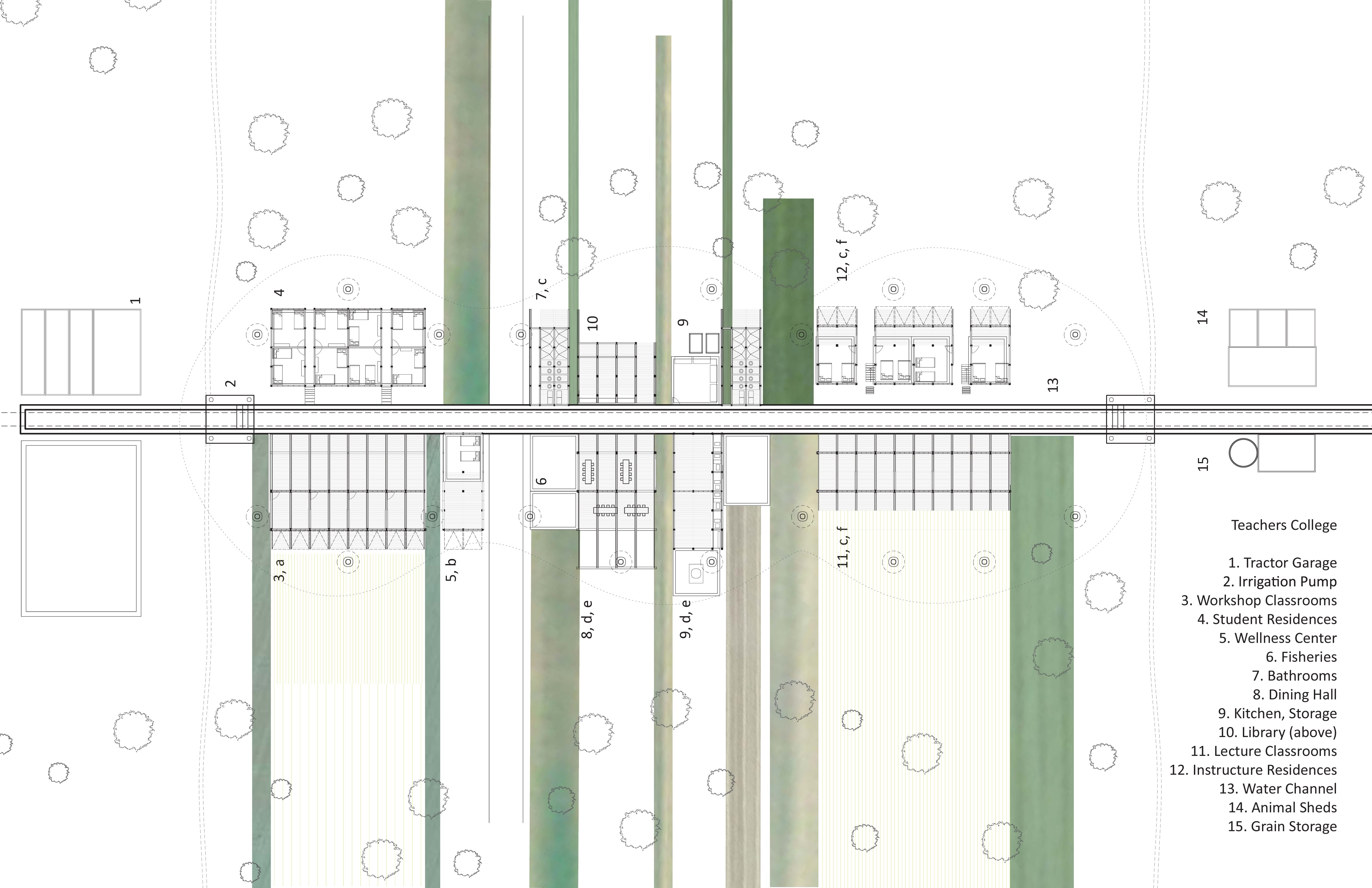Agri-École
Lubumbashi, DRC
2009
The Democratic Republic of Congo alone has the agro- ecological capacity to grow food for 2 to 3 billion people yet currently uses less than 5 per cent of its potential arable land. With investments in modern agriculture, the country could feed all the new people that will be born between today and 2050. Agri-Ecole envisions an education campus in which planting, harvesting, and learning work hand in hand. Providing a safe environment integrated with the surrounding ecosystem, both students and teachers will be more connected with the food they grow and eat. Education is considered a lifestyle on the campus, where multiple activities maintain Congolese cultural traditions such as music and dance, while also promoting awareness of environmental issues and natural ecosystems.
Daily routines on the campus would be intertwined with the scholastic directive of the school. For example, the communal dining hall will function as a social space and a laboratory where students and families learn and appreciate the bounty of their hard work. Both teachers and students work and live together, maintaining a community that grows alongside agricultural production. Living quarters for students and families are located adjacent to tree nurseries and fish ponds; classrooms are sited alongside crop zones. A small ratio of teachers to students ensures that each child is given the attention needed to learn both specialized agricultural methods while also developing core curricula skills, such are reading and writing. There is also sensitivity to local customs and cultural traditions. Weekly fieldwork sessions bring teachers and their students together to cultivate the land while weekend recreational activities provide ample time for dance, music and play. The primary purpose of Agri-Ecole is to instill the role of education as a lifestyle rather than a requirement or privilege.
The image that Agri-Ecole hopes to achieve is one where both teachers and students learn through direct cultivation of the land. Each element of the design - from water-collecting roofs to irrigation channels - is directly in contact with the environment, allowing people to feel a strong connection to their surroundings. The dream is to celebrate Congolese identity and environmental stewardship as a model for the nation.
In collaboration with Annie Kurtin.








